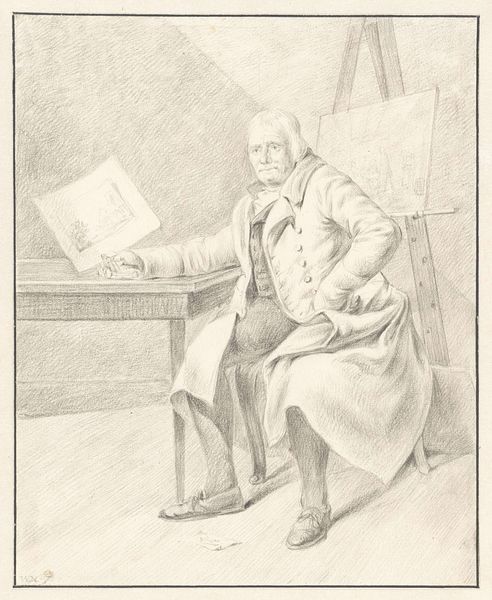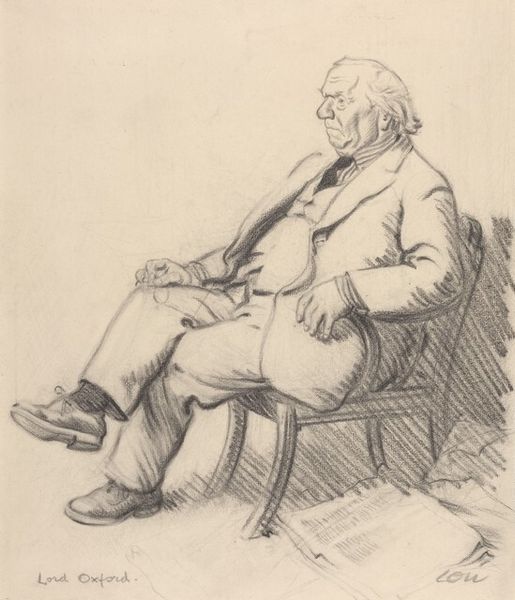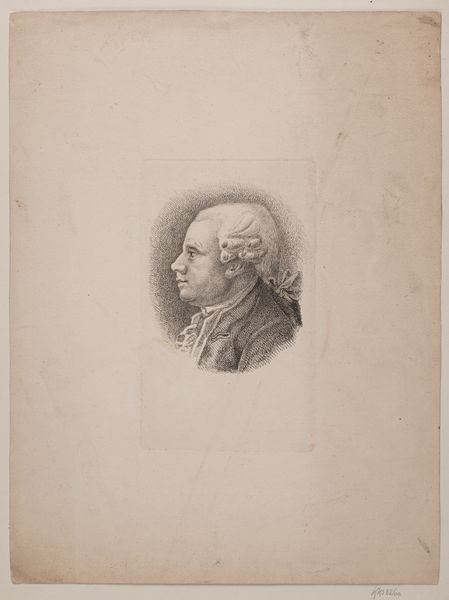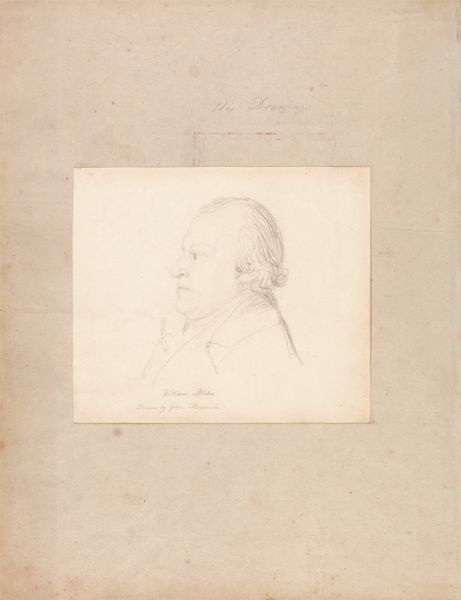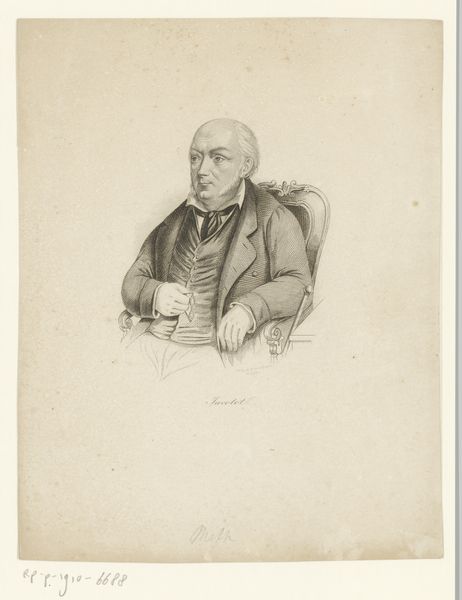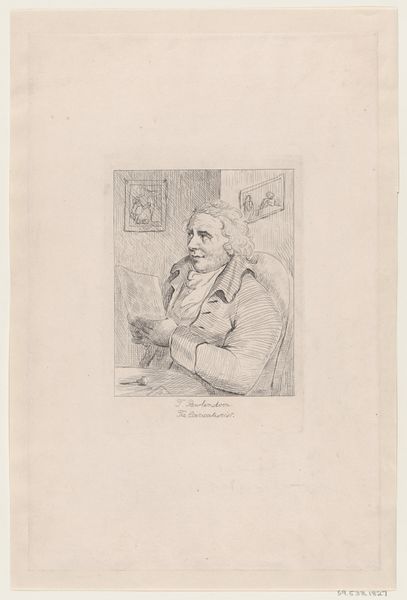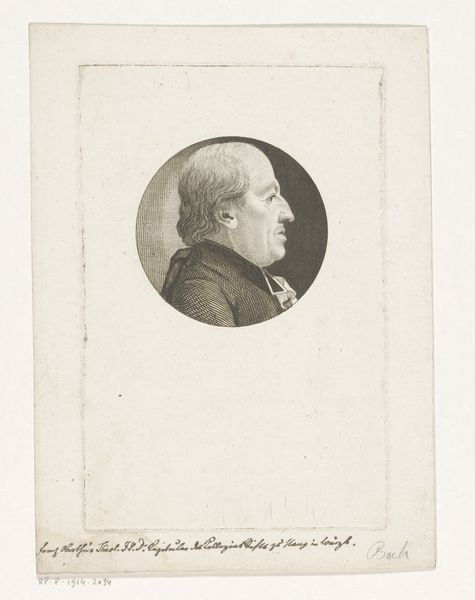
drawing, print, etching, pencil, engraving
#
portrait
#
pencil drawn
#
drawing
# print
#
etching
#
pencil sketch
#
pencil
#
portrait drawing
#
history-painting
#
engraving
Dimensions: plate: 7 3/4 x 5 5/8 in. (19.7 x 14.3 cm) sheet: 8 15/16 x 6 7/16 in. (22.7 x 16.4 cm)
Copyright: Public Domain
Editor: So this is "A Sketch (Portrait of George Stubbs)" made sometime between 1750 and 1800 by James Bretherton, a drawing etched into a print. I’m really struck by the intimacy of it; it’s like we’re catching Stubbs in a private moment of creation. What historical perspectives do you think are relevant to understanding this work? Curator: Absolutely. Beyond the visual intimacy, let’s consider the socio-political backdrop. Stubbs, known for his anatomical accuracy, was working in a period of Enlightenment. The emerging scientific culture valued empirical observation. How might Stubbs's focus on realism intersect with the dominant societal power structures of the time, considering class and patronage? Editor: That's interesting. I guess his detailed portrayals of animals, often owned by the aristocracy, both catered to and possibly challenged class distinctions through representation? Curator: Precisely. Think about it: Whose stories were being told, and through whose eyes? His meticulous depiction of animals could be seen as celebrating the landed gentry, but does the artist offer alternative perspectives on power dynamics and societal roles? Editor: So, we're looking at not just *what* is depicted, but *how* and *why*. The 'why' seems particularly tied to issues of power, class and representation. Curator: Exactly. Bretherton captures not just Stubbs' likeness, but also a moment reflective of broader cultural values and potentially subversive commentary. How does considering these intersectional elements shift your initial understanding of the work’s intimacy? Editor: It makes it feel less like a purely personal moment and more like a carefully constructed image that's engaged with the societal and cultural norms of the time. Thanks, I'm definitely thinking about portraiture differently now! Curator: The dialogue between art and society is always illuminating, isn’t it? It allows us to see beyond the surface and understand the deeper layers of meaning embedded within an artwork.
Comments
No comments
Be the first to comment and join the conversation on the ultimate creative platform.

